Our latest guest blog from The Travelphile, Trish Feaster, describes some memorable meals she’s enjoyed in Europe. One thing I appreciate about traveling with Trish is her foodie sensibilities. If you’d like to hear more, follow her blog.
Food Porn
There’s something so evocative to me about pictures of food and the power they have to vividly remind me of mouth-watering meals and moments that I’ve had on my travels. I can look at my culinary photos and remember exactly where I was, the scent of the dish just placed in front of me, and the way the flavors open up on my palate. The best currywurst I ever had was in Berlin, just a few blocks from Under den Linden. When I look at the photo of that dish — a steamed then fried plump pork sausage laden with a tangy yet sweet blend of ketchup, curry powder, and Worcestershire sauce, protected by a crispy and salty French fry fort, and accessorized by caramelized necklaces of onions — my mouth just waters. And I’m reminded that over sixty years ago, in West Germany, because of the kindness of some British soldiers, a Berlin chef was given these now-seemingly common ingredients and invented this saucy recipe that is now served over 80 million times a year in Germany. Food, especially when you’re traveling, is not merely about sustenance and nutrition. It’s about the culture of the place.Countries reveal themselves through their foods. Regional specialties are shaped by the climate, season, and terrain of the area. In France, many pair their wines with cheeses from the same region because they’re designed to go together. They have a common terroir (the idea that agricultural products and even livestock from a particular area are influenced by the geography, geology, climate — coupled with human tradition and pride — and are therefore embodied with flavor characteristics that are particular to that region), so their flavors complement one another. Italians would call that “ben sposato” or a good marriage. In Italy you’ll find that Northern specialties tend to feature creams, cheeses, butter, beef, and pork (although seafood is common on the coasts) while Southern dishes often spotlight seafood, vegetables (particularly tomatoes and eggplant) and olive oil. Spain’s northwestern coastal region of Galicia is heralded for its seafood and sauce-laden dishes, while its central mountainous and agricultural region of Castilla-Léon dominates in the preparation of pork, beef and game dishes, as well as stews.
National cuisines are also spiced up by newer immigrant cultures melding with established ones (whose modern-day traditions were also shaped long ago by conquerors and visitors of ages past). Döner Kebabs (Turkey) are found on practically every other corner in Berlin. Bun Thit Nuong (Vietnam) and Tagines (North Africa) are commonplace in Paris, and Chicken Tikka Masala (an Indian-influenced recipe) is actually considered to be Britain’s national dish. Culinary diversity reflects cultural diversity.
The same is true in America. Our varied regional staples range from New England clam chowder to Texas BBQ, from Wisconsin cheeses to California avocados, and from Idaho potatoes to Hawaiian poi. And even within regions, influences from cultures, as well as lifestyles, have helped impacted the ever-changing American cuisine scene. Throughout our history, our diets have been shaped by the British, Native Americans, Spaniards, the French, Germans, the Dutch, African cultures, Italians, the Irish, Latinos, Asians, Caribbean cultures, Jews, Indians, Middle Eastern cultures, and by so many others. Within and beyond specific cultural cuisines, we also have foods that cater to the health-conscious, the gluten-free clientele, low-carb eaters, vegetarians, people on low-sodium diets, foodies, those who only eat organic foods, and so on and so on. “Fusion” foods are ubiquitous, food trucks are all the rage, and desserts are practically considered their own basic food group.
Foods can remind us of the struggles of our forefathers. When times were tough and resources scarce, families made due with what was available. In Estonia, harsh living conditions due to weather, the tumult of living under the rule of at least five different foreign countries, and collective farming systems under Communist rule that exported Estonian products to other Soviet countries often left people in precarious circumstances without much access to wealth or food. But one thing remained essential, even sacred, to Estonians – black bread. It is always served with a meal. No Estonian would dare complain about the bread saying it’s too hard or too dry, and if a piece fell to the floor, one would pick it up, kiss it to show respect, and eat it. In fact, instead of saying something like Bon appétit, Estonians say jätku leiba—may your bread last.
We, too, can think of our family traditions and realize the crucial role food plays in our own cultures. In my own family and throughout the Filipino culture, we have stories of limited access to certain foods due to poverty, war, or unavailability. Because of that, it’s ingrained in us to always share what we have and to insist that our guests eat heartily. When you can provide, you do so to the best of your ability because one day you may be in need and have to rely on the generosity of others. Whenever I go to any of my relatives’ houses, the first question they ask isn’t “How are you?” it’s “Did you eat yet?” And I’ve never left a Filipino party without the host insisting that I baon (BAH-ohn) some of the dishes or take some home as leftovers.
When you consider what you consume, whether you’re traveling across the sea or across the street, think about the history behind that meal. Let it be a bridge into that culture — culture resides at the hearth as much as in the museum. Think about where the ingredients came from or how they were cultivated/harvested/raised/processed. Reflect on why that dish became important to that region, why it became popular outside of that locale or why it’s part of the national cuisine. Ponder why it may be considered a delicacy in the country you’re visiting but not in your own and why that distinction exists. There may be a real history, tradition, and culture behind that meal, and when you become more aware of that, the food takes on a whole new cultural flavor that makes your dining and travel experience that much more pleasurable.
Capturing a photo of the meals I enjoy isn’t just about capturing a culinary memory. It’s a way to add another layer to how I learn to understand and better appreciate the culture of the place I’m visiting through food. Create your own food porn to stoke memories and gain better insight into the cultures you explore. You’re not just eating something tasty…you’re ingesting a piece of that very culture. With an understanding of the context of what you’re eating vis-à-vis the people who made it, you are, in a sense, communing with that culture. And that’s well worth the calories.
Can’t get enough food porn? Check out some of these finger-licking foods.
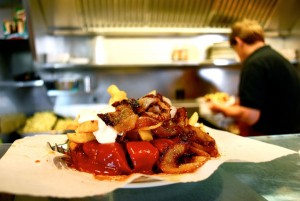
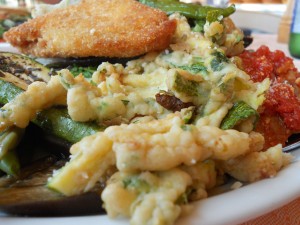

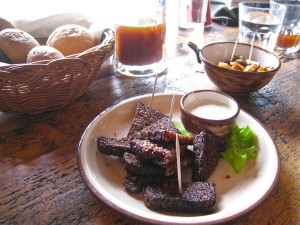

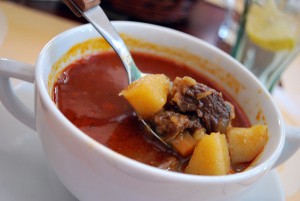
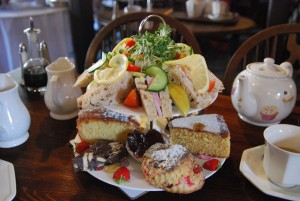



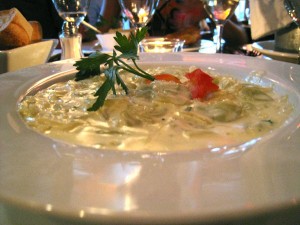


Food Porn? Hey, Trish, some words of advice: Stop trying to be Anthony Bourdain. Write a few books, have a hit show for eight seasons on Travel Channel, and work as a chef for MANY years before all of that. And THEN you MIGHT be qualified to write a blog entry about food porn. Until then, please stop trying to imitate the master himself.
Thomas,
That’s a rather unkind remark. I read this article to be more about the authors reflections on the food that she’s writing about, rather than an authoritative culinary masterpiece from a Chef.
I’m sure you’ve heard the old saying, “if you can’t say anything nice, then don’t……”
Cheers!
Really enjoying the new spin on your writing. Have already picked up some good information on my up coming trip. Today on Thanksgiving we should all be thankful that we have the freedom of speech in this country to write on a blog like this.
Happy Thanksgiving to all on this blog!
Sorry, not a fan of the guest blogger. Nice that Rick is giving his girlfriend’s writing a wider exposure but I’d rather read Rick’s entries on his blog.
Agree with Susan. Didn’t care for the Alaska piece either. Rick, put down the doob and start blogging again!
I think we all come to this blog to hear what is going on with Rick.
I agree with the others–Trish is not in the same league.
One of the best things you can do for your company is mentor and experiment. The former sets the stage for succession, the latter for expansion. Inevitably the newcomer is criticized even if constructively because the customer has become accustomed to the boss or expert or stylist. That’s not to say that you don’t react and respond to complaints (because you do have a business to sustain.) But you keep putting others out there and you persist in taking the spotlight off yourself and experimenting because none of us is getting any younger and there are some coming along who might like the style and content of other writers and photographers and travelers.
Despite some others’ comments, Trish is an excellent writer (and photographer) and I’ve enjoyed her pieces on her Alaska experience and on food while traveling. Thanks, Rick for including her here.
Regardless of the quality of Ms. Feaster’s writing, I visit the Rick Steve’s Europe web site to read about EUROPE. If I want to read about Alaska, I’ll find another web site. If Ms. Feaster sticks to stories related to Europe, such as the one above, I am fine with that. If Rick wants to have other guest bloggers, why not use some of the co-authors/ETBD travel guides (e.g., Steve Smith [?], who has also been in several of the French episodes of his TV series)?
I don’t have a problem with Rick expanding beyond Europe (I’m posting this from Argentina), but agree I would prefer to see ETDB employees as guest bloggers. I do not need to be reminded of Rick’s “travel partner”.
One more thing: I hate the title “Food Porn.” We all know what porn is and to use that disgusting term to refer to wonderful food is amateurish.
Some revealing and instructive feedback from RS customers. He should read their comments.
Wow…had no idea about Rick’s personal life. Oh, wait, neither do any of you. Really folks, keep those kind of snide remarks off the blog, capice?